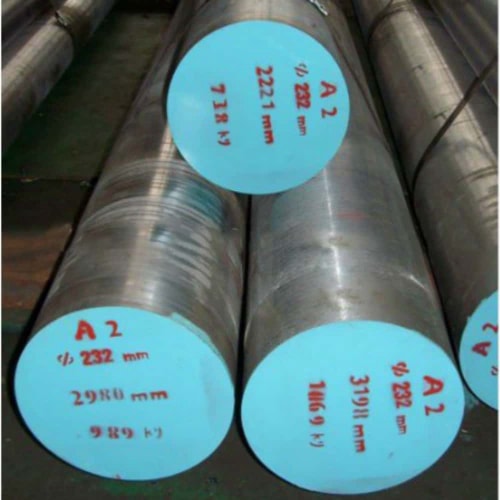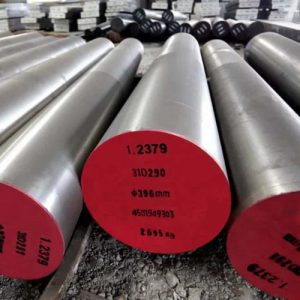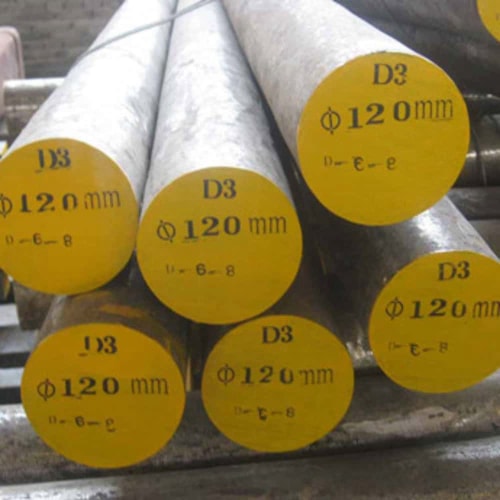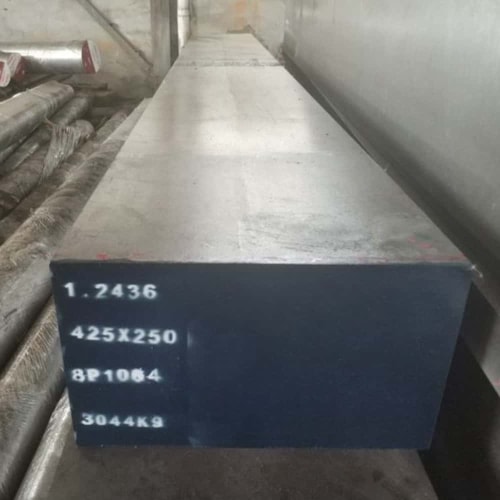A2 (1.2363) Cold Work Tool Steel

A2 (1.2363) Cold Work Tool Steel
A2 Steel (1.2363) is a high-quality, air-hardening, cold-work tool steel known for its combination of good wear resistance, high toughness, and excellent dimensional stability. It is widely used in the production of tools that require a balance between hardness and durability, making it ideal for medium to heavy-duty cold-working applications.
Product Parameter Table
Chemical composition :
|
Element |
A2 |
1.2363 |
|
C |
0.95-1.05 |
0.95-1.05 |
|
Si |
0.4-1.0 |
0.4-0.8 |
|
Mn |
0.03max |
0.03max |
|
S |
0.03max |
0.03max |
|
P |
0.1-0.5 |
0.1-0.4 |
|
Cr |
4.75-5.5 |
4.80-5.5 |
|
V |
0.15-0.5 |
0.15-0.35 |
|
Mo |
0.9-1.4 |
0.9-1.2 |
Mechanical properties :
|
Tensile Strength Mpa |
Yield Strength Mpa |
Elongation % |
Reduction Area Z(%) |
Charpy Impact |
|
670-710 MPa |
345-350 MPa |
41% |
21% |
12 J |
Round steel:
Rolling size range: 10-260mm
Forging size range: 70-800mm
Square steel:
Thickness size range: 10-500mm, width size range: 200-810mm
Forged rings:
Outer diameter size can reach up to 1000mm
Application
A2 steel (also known as 1.2363) is a high-performance cold work tool steel known for its excellent wear resistance, toughness, and stability. It’s widely used in the manufacturing of tools that require both durability and precision. Some key applications include:
1.Die Casting Tools: A2 steel is commonly used for manufacturing molds and dies in the die-casting industry due to its ability to resist wear and maintain sharpness under high-pressure conditions.
2.Stamping Dies: A2 steel is ideal for stamping tools because it offers resistance to cracking and deformation during high-volume production runs.
3.Blades and Punches: A2 steel is widely used for producing blades, punches, and other cutting tools, thanks to its excellent hardness and edge retention.
4.Cold Forming Tools: A2 steel is used in tools for cold working processes like bending, drawing, and punching metal due to its high strength and ability to resist deformation at lower temperatures.
5.Cutting Dies: A2 steel’s resistance to abrasion makes it a popular choice for cutting dies used in high-stress applications, where wear resistance is critical.
6.Tooling for Woodworking: A2 steel is used in tools for woodworking due to its high level of toughness, which helps in maintaining tool integrity and precision.
These applications take advantage of A2 steel’s unique balance of hardness, toughness, and dimensional stability, making it an excellent choice for high-performance tooling needs.
Customer Testimonials
Exceptional Toughness
A2 steel’s toughness is truly remarkable. We work with heavy machinery components that are subjected to constant impact and stress. This steel has proven to be incredibly durable, withstanding the harshest conditions without any signs of cracking or deformation. It has saved us a significant amount of time and money by reducing the frequency of repairs and replacements. The ability to maintain its structural integrity under such demanding circumstances is a testament to the steel’s superior quality.
High Hardness for Precision Tools
The high hardness of A2/1.2363 steel is a game-changer for our precision tool manufacturing. We produce cutting tools that require a sharp and long-lasting edge, and this steel delivers just that. It allows us to create tools that can cut through tough materials with ease, without the need for frequent sharpening. The edge retention is outstanding, ensuring consistent performance and high-quality results. This has not only improved our production efficiency but also enhanced the reputation of our tools in the market.
Dimensional Stability for Precision Engineering
When it comes to precision engineering, dimensional stability is crucial. A2/1.2363 steel excels in this regard. It maintains its size and shape throughout the manufacturing process, even after heat treatment and under varying operating conditions. This has allowed us to achieve extremely tight tolerances in our components, ensuring a perfect fit and function. The consistency in dimensions has significantly reduced the need for adjustments and rework, saving us time and resources. It’s the ideal choice for applications where precision is non-negotiable.






